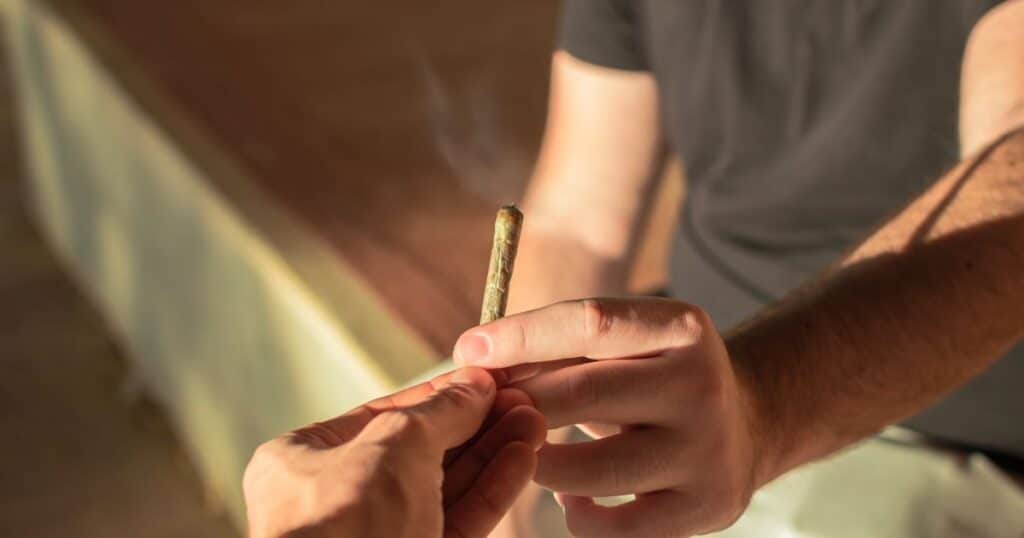In recent years, the conversation around substance use and its societal impact has shifted dramatically. With the rise of cannabis legalization in many regions and the ongoing opioid crisis that continues to devastate communities, understanding how different substances, including cannabis consumption, affect not just users but also those around them has become important.
A recent study sheds light on this, revealing some significant findings about secondhand harm. According to the research, people are far more likely to experience secondhand harm from alcohol and opioids than from cannabis.

Study’s Findings
A study published in the Journal of Studies on Alcohol and Drugs analyzed data from a nationally representative sample of 7,799 Americans aged 18 and older. The researchers found that 34.2% of respondents reported experiencing secondhand harm from alcohol, while only 5.5% reported similar harm from cannabis. Additionally, 7.6% of respondents experienced secondhand harm from opioids and 8.3% from other drugs.
Secondhand harm refers to the negative consequences experienced by individuals due to someone else’s substance use.
Per the study, these harms can range from family and marriage difficulties to financial issues, physical harm, and even traffic accidents.
Alcohol Consumption, Opioids, and Other Drugs
The study found that alcohol use is a significant source of secondhand harm. Respondents reported various negative effects, including financial difficulties, relationship issues, and even physical harm.
Women, white individuals, and those who are separated, divorced, or widowed were more likely to experience these harms. The widespread nature of alcohol-related secondhand harm highlights the need for more stringent regulations and public health interventions.
Opioids and other drugs also contribute to secondhand harm, though to a lesser extent than alcohol. The study found that 7.6% of respondents had experienced secondhand harm from opioids, while 8.3% reported harm from other drugs.
Cannabis Consumption
In contrast to alcohol, researchers found that cannabis use causes much less secondhand harm. The study revealed that only 5.5% of respondents had experienced harm related to someone else’s cannabis use.
Interestingly, many of these harms were linked to the prohibitive legal status of cannabis rather than its misuse. The authors noted that Black individuals are disproportionately subject to legal consequences and random drug testing for cannabis use, leading to financial strains and family challenges that impact the community.
Cannabis stands out as a safer substance when it comes to secondhand harm. The study found that cannabis users themselves had significantly lower odds of reporting secondhand harm. This finding aligns with previous research indicating that cannabis consumption has fewer public health effects compared to alcohol. The lower prevalence of secondhand harm from cannabis shows that it is a less disruptive substance in social and familial settings.
In an article about the study, NORML’s Deputy Director Paul Armentano said that he was not surprised by the results. “It’s well established that cannabis’ public health effects are far less than those associated with the use of alcohol and most adults now acknowledge this reality.”
One of the key reasons for the lower prevalence of secondhand harm from cannabis may be its increasing legalization, the authors noted in their conclusion of the study.
Legal cannabis markets are regulated, which helps ensure product safety and reduces illegal activities. This regulation can mitigate many of the harms associated with unregulated drug markets, such as violence and criminal behavior.

Cannabis Should Have Even Playing Field
This study shows that cannabis should be categorized alongside other substances in terms of secondhand harm. The data clearly indicates that alcohol causes the highest incidence of secondhand harm, yet it remains one of the least regulated.
It is ironic and concerning that a substance causing substantial societal issues is less controlled than cannabis, which demonstrates a far lower incidence of such harm.
As we move forward, it is crucial to have regulations that reflect the actual risks posed by these substances.
Hopefully, as more and more research due to the move from Schedule I to Schedule III highlights the relative safety of cannabis in comparison to alcohol, regulatory frameworks will evolve to be more rational and evidence-based. Aligning cannabis regulations with its demonstrably lower risks could lead to more commonsense policies that safeguard public health more effectively.















